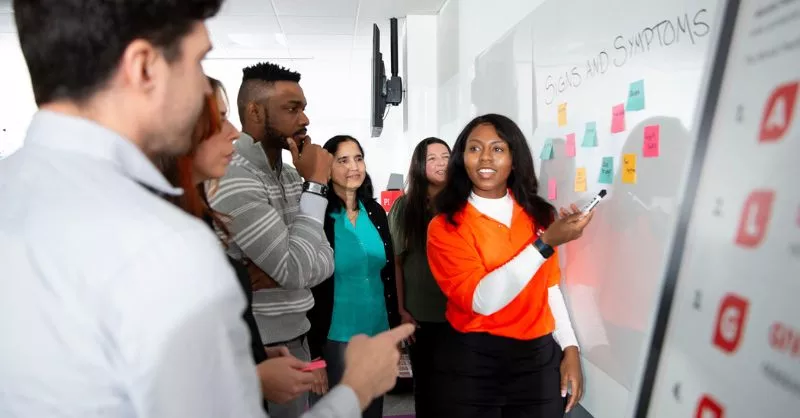
As an Adult/Youth Mental Health First Aid (MHFA) Instructor, you can empower your community to be the difference for those experiencing a mental health or substance use challenge. Being an Instructor is immensely rewarding. It’s also quite a bit of work. Whether you’re an independent Instructor or you’re offering MHFA on behalf of an organization, creating a sustainable MHFA program in your community requires a plan — one that will afford you or your organization the resources to invest in the growth of your program. This is especially important if you’re an independent Instructor, figuring out how to compensate yourself for all your efforts.
The National Council for Mental Wellbeing is here to help you along the way. Join one of our monthly webinars to learn about the requirements, pricing and what to consider before enrolling to become a MHFA Instructor. In this article, we’ll explore some tips to keep in mind when building your MHFA delivery strategy.
MHFA Instructors set their own price for the MHFA courses they offer. While the cost to Instructors can be between $18.95 to $23.95 per seat (depending on whether you’re teaching an in-person or blended course), you should account for your incurred costs when setting the price for your learners. This includes the initial cost of earning your Instructor certification, which can range between $2,000 to $2,200. After accounting for your own time, marketing costs, rented space and the materials you purchase to offer the course, the value to the learner can be as much as $170 per seat. This flexible pricing model allows Instructors to strategically position their prices to best serve their target audience and market.
Here are some strategies to consider:
Teaching MHFA doesn’t demand extensive ongoing costs, especially for blended delivery. You can reduce your expenses for in-person courses by finding free or low-cost spaces to hold classes, and some organizations might offer materials for printing, which could also cut down on costs.
Pro tip: Create a budget to track your expenses. (Here are 10 expense trackers and seven free small business budget templates you can choose from.) This should include costs for course materials, marketing and certifications (which could be tax write-offs!). By doing this, you can determine if you are making a profit.
Profitability hinges on teaching regularly, and you must teach at least three MHFA courses annually to maintain your Instructor certification. It’s helpful to cultivate a network of reliable clients and establish a niche market. Strong ties with local organizations and causes can be instrumental in sustained success, ensuring a steady flow of clients and opportunities for collaboration and growth. Effective networking, branding and marketing become invaluable tools in the long term.
Here are a few ways you can reach new audiences:
Striking a balance between people trained and people yet to become trained is key. While maintaining a consistent client base is important, expanding your audience reach ensures that you always have a flow of participants joining your class. For example, working with colleges provides new students to train in MHFA year after year.
Consider these methods to tap into new markets:
Becoming a MHFA Instructor offers a path to support yourself while supporting others, but it requires strategic planning, dedication and community engagement. Creating a plan can help Instructors navigate the complexities of pricing, teaching opportunities, market diversity, community engagement and aligning financial goals with impactful objectives.
As a MHFA Instructor, you can empower others to understand and respond to signs and symptoms of mental health and substance use challenges. And you’ll join a community of thousands of Instructors who have collectively trained over 3 million First Aiders nationwide.
Not an Instructor but interested in becoming one?
Join one of our monthly webinars to learn about the requirements, pricing and what to consider before enrolling to become a MHFA Instructor. Together, we can make a difference by training every 1 in 15 people to address mental health and substance use challenges within their circles. Register today and #BeTheDifference.
Glossary
In-person course: Face-to-face Instructor-led training that does not require self-paced pre-work.
Blended course: Used broadly to describe MHFA courses that include both self-paced and Instructor-led content.